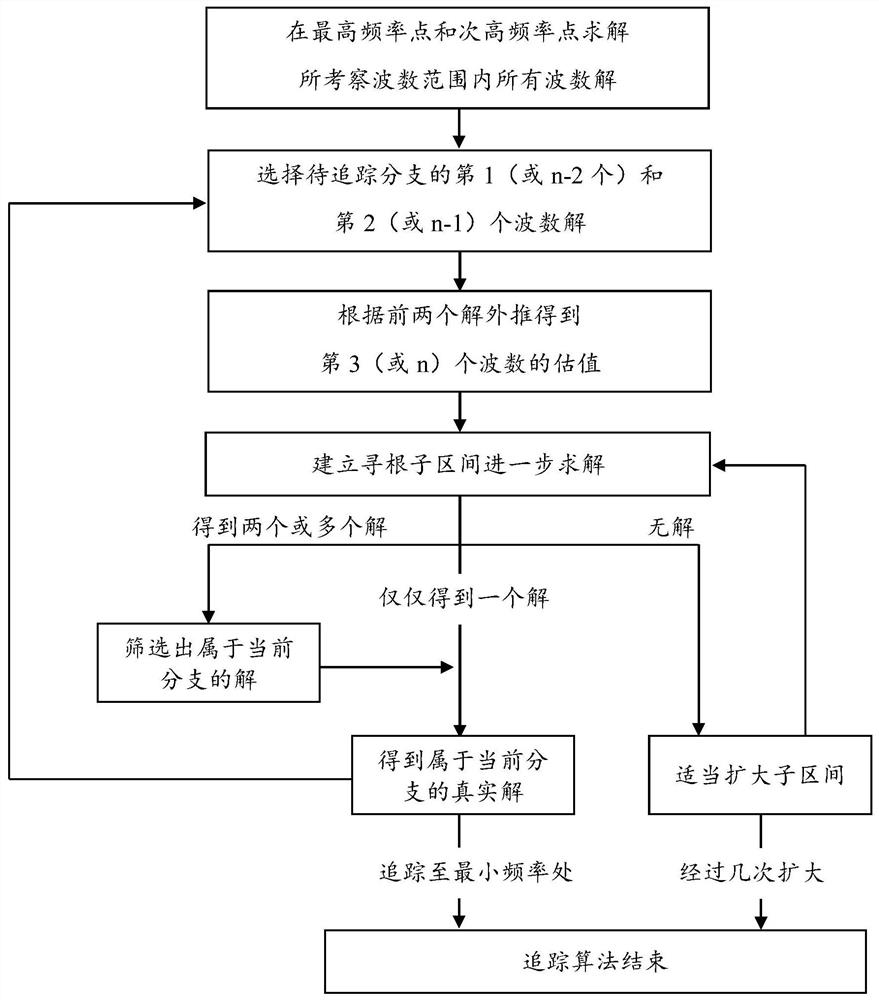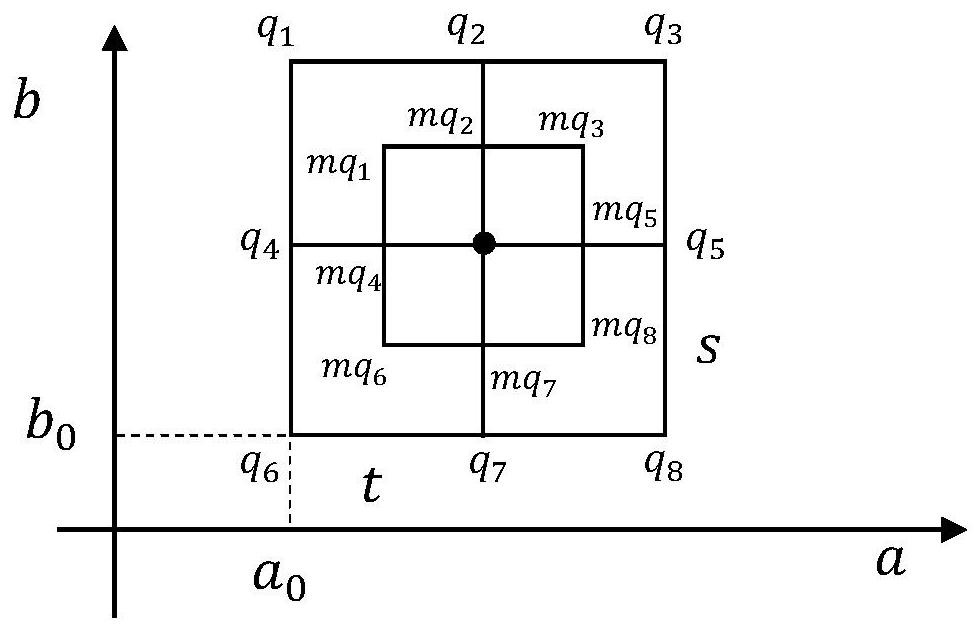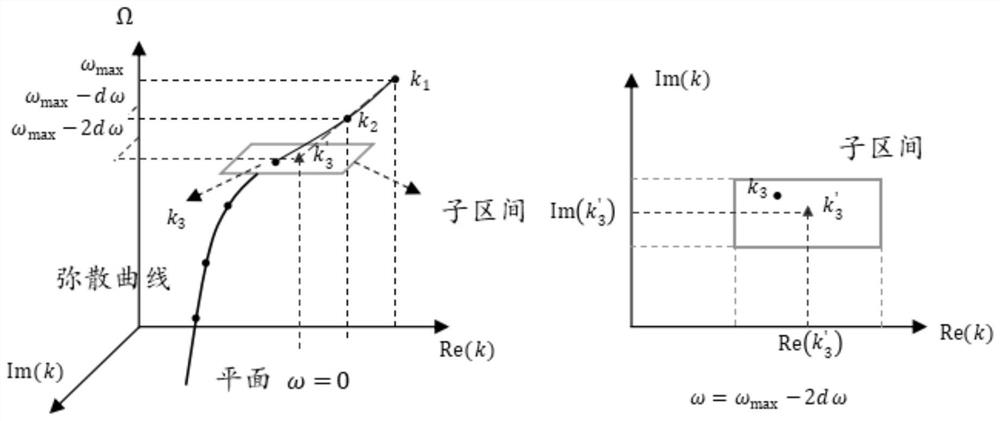Numerical method for quickly drawing dispersion curve in complex wave number domain in waveguide structure
A technology of dispersion curves and numerical methods, applied in the field of drawing dispersion curves in the complex wavenumber domain, can solve problems such as large calculation time, achieve the effect of optimizing data structure and improving solution efficiency
- Summary
- Abstract
- Description
- Claims
- Application Information
AI Technical Summary
Problems solved by technology
Method used
Image
Examples
Embodiment 1
[0087] The spectrum of the Rayleigh-Lamb wave, the dispersion equation of its longitudinal mode is:
[0088]
[0089] Ω and Z are frequency and wavenumber, respectively.
[0090]
[0091] where C T,L is the bulk wave velocity of the material, η T,L are the attenuation coefficients per unit wavelength, respectively.
[0092] Considering the case of viscoelasticity, the parameters are set as follows:
[0093]
[0094] Solved with the modal tracking separation method of the present invention to obtain Figure 5 .
[0095] Consider the case of pure elasticity, that is, η T = η L = 0, obtained by using the mode tracking separation method of the present invention Figure 6 .
[0096] The bending mode dispersion equation is:
[0097]
[0098] The results obtained by solving the viscoelastic structure with the mode tracking separation method of the present invention are as follows: Figure 7 , the purely elastic mode separation results in Figure 8 .
Embodiment 2
[0100] Considering the propagation of Lamb waves in an isotropic double-layer plate, the dispersion equation can be expressed as:
[0101] |A(ω,k,λ n ,μ n , h n )|=0 (n=1,2) (5)
[0102] Matrix A is the coefficient determinant, where the material parameter is λ n and μ n , geometric parameter h n , the frequency is ω, and the wavenumber is k. The parameters are set as follows
[0103]
[0104] First apply η in layer 1 T = η L = 0.01 viscosity coefficient, the result obtained by using the mode tracking separation method of the present invention is as follows Figure 9 shown.
[0105] First use the mode tracking separation method of the present invention to solve the results in the pure elastic structure, such as Figure 10 shown.
[0106] It can be seen from the figure that the calculated modal branches of the pure elastic structure and the viscoelastic structure do not completely match, and the method of mode tracking separation is only effective for some low-or...
Embodiment 3
[0109] Investigating the wave propagation in the infinite piezoelectric plate, the dispersion equation of the symmetrical mode is:
[0110]
[0111] Ω and Z represent frequency and wavenumber, respectively. Without distinguishing between modes, use the dispersion curve drawing method of the present invention to solve Figure 12 (k=0.48).
[0112] The dispersion equation of its antisymmetric mode is:
[0113]
[0114] Ω and Z represent frequency and wavenumber, respectively. Without distinguishing between modes, use the dispersion curve drawing method of the present invention to solve Figure 13 (k=0.48). The initial wave numbers for tracing roots include pure real numbers, pure imaginary numbers and complex numbers.
[0115] The present invention describes a method for drawing the dispersion equation in the complex wavenumber domain by means of single-branch tracing and root-finding, and based on this, it proposes a method that can simultaneously separate modes and ...
PUM
 Login to View More
Login to View More Abstract
Description
Claims
Application Information
 Login to View More
Login to View More - R&D
- Intellectual Property
- Life Sciences
- Materials
- Tech Scout
- Unparalleled Data Quality
- Higher Quality Content
- 60% Fewer Hallucinations
Browse by: Latest US Patents, China's latest patents, Technical Efficacy Thesaurus, Application Domain, Technology Topic, Popular Technical Reports.
© 2025 PatSnap. All rights reserved.Legal|Privacy policy|Modern Slavery Act Transparency Statement|Sitemap|About US| Contact US: help@patsnap.com



